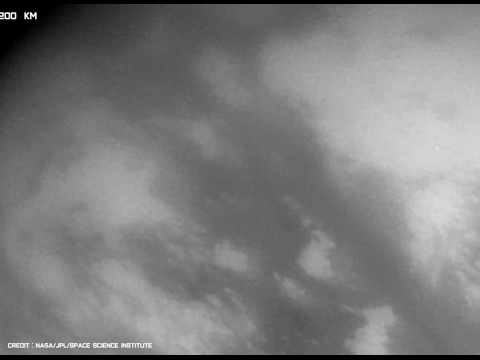#Cassini Mission
Text
About the Planet Saturn
About the Planet Saturn: A Journey Through the Gas Giant’s Mysteries
ALL PLEASUER
Welcome to our exploration of the fascinating planet Saturn, the sixth planet from the Sun and the second-largest in our Solar System. This blog post will delve into the intriguing aspects of this gas giant, from its composition primarily of hydrogen and helium, to its iconic rings made of billions of particles of…

View On WordPress
#Ancient Greeks#Astronomy#Cassini Mission#Discovery of Saturn#Enceladus#Extreme Weather#Gas Giant#Great White Spot#Hydrogen and Helium#Iapetus#Ice and Rock Particles#Outer Space#Planet Saturn#Roman God Saturn#Saturn#Saturn Research#Saturn&039;s Atmosphere#Saturn&039;s Composition#Saturn&039;s Gravity#Saturn&039;s History#Saturn&039;s Moons#Saturn&039;s Pressure#Saturn&039;s Rings#Saturn&039;s Storms#Saturn&039;s Temperature#Solar System#Space Exploration#Space Science#Titan#Voyager Mission
0 notes
Text

Lost in the rings
#space art#space#artists on tumblr#honse doodles#inspired by the moon Enceladus#something completely different from what I usually draw!#but I was watching a video on the Cassini mission and got struck by sudden inspiration as one does lol#and sometimes you gotta draw something out of your zone of comfort to clear out the cobwebs in your brain
84 notes
·
View notes
Text
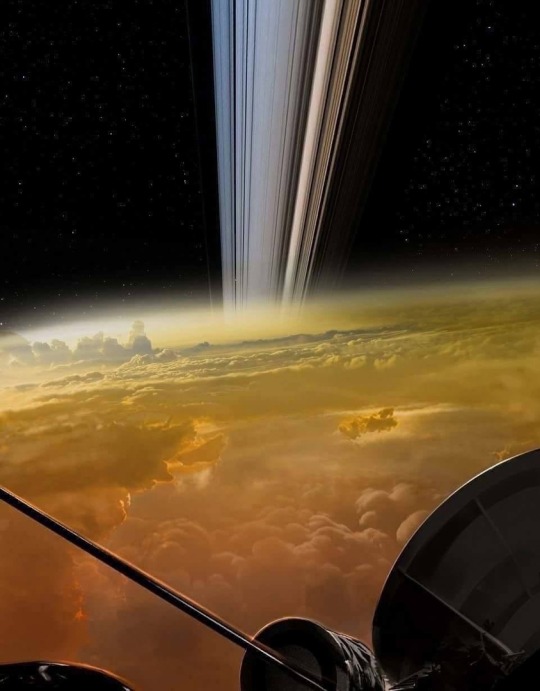
Cassini-Huygens Last Dives (Illustration).
NASA/ESA/JPL.
72 notes
·
View notes
Link
Join us for SpaceTime Series 27 Episode 89, where we explore the latest cosmic events and advancements in space exploration.
- Titan's Tiny Waves: Astronomers have determined that the seas of Saturn's largest moon, Titan, exhibit very tiny waves, only a few millimetres high. The findings, based on data from the Cassini spacecraft, reveal tidal currents and provide fresh insights into Titan's liquid hydrocarbon seas.
- Moon Caves as Future Lunar Dwellings: New research suggests that underground cave networks on the Moon could offer safe dwellings for future astronauts. Detected through NASA's Lunar Reconnaissance Orbiter, these caverns could provide shelter from radiation and extreme temperatures.
- Increased Fire Risk on Space Missions: A new study warns of an increased risk of fire on future long-distance interplanetary space missions. The unique conditions of microgravity and lower ambient air pressure could make fires spread more quickly and burn more intensely, posing significant dangers for space travellers.
- 00:00:00 - New research shows moon caves could provide future lunar dwellings for astronauts
- 00:00:47 - Scientists find evidence of tidal currents in seas of Saturn's largest moon Titan
- 00:07:57 - Astronomers find evidence of potentially accessible underground cave networks on the moon
- 00:10:31 - New research warns fires will provide increased risk for space travellers on future missions
- 00:15:31 - New study claims some bugs could be linked with autism spectrum disorder
- 00:18:06 - Apple's new vision pro augmented goggles have grabbed heaps of attention
Follow our cosmic conversations on X @stuartgary, Instagram, YouTube, and Facebook. Join us as we unravel the mysteries of the universe, one episode at a time.
Sponsor Offer: This episode is proudly supported by NordVPN. Secure your digital journey across the cosmos with a VPN service you can trust. Find your stellar security solution at https://www.bitesz.com/nordvpn.
Listen to SpaceTime on your favourite podcast app including Apple Podcasts, Spotify, YouTube Music, or wherever you get your podcasts.
#cassini#caves#dragonfly#dwellings#exploration#fire#interplanetary#lava#lunar#microgravity#mission#missions#moon#risk#saturn's#seas#space#spacecraft#titan#waves
0 notes
Text

#source:youtube#name:What Did Cassini See During Its Historic Mission To Saturn? 1997-2017 (4K UHD)#channel:V101 SPACE#saturn
0 notes
Text


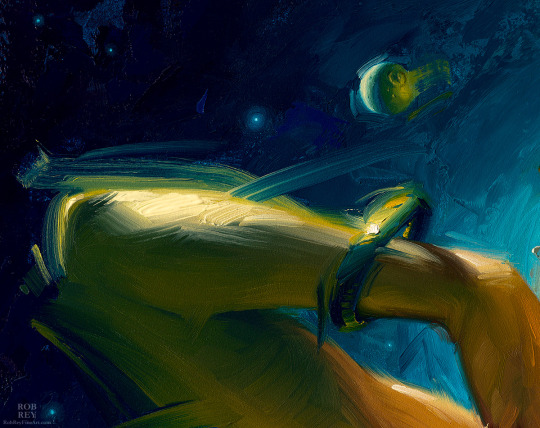

Cassini Spacecraft
Oil, 18 x 24 in, 2018
In our pursuit to understand the solar system we find ourselves in, we sent an explorer on a billion mile journey to the Saturnian system. The Cassini Spacecraft sent back amazing new data and images of Saturn and it's 62 known moons, 46 of which were unknown when Cassini left. We learned that the moon, Enceladus, may have everything it needs to support life deep in it's global ocean, Titan has a liquid methane sea, and so much more.
In 2017, low on fuel after twenty years in space and so much information gained, Cassini took several dives between Saturn and it's rings to learn a little more before it's mission came to an end. To avoid possible microbial contamination of any of Saturn's moons, Cassini dove and burned up in Saturn's atmosphere, while sending back it's final data.
Prints: https://robrey.storenvy.com
580 notes
·
View notes
Photo
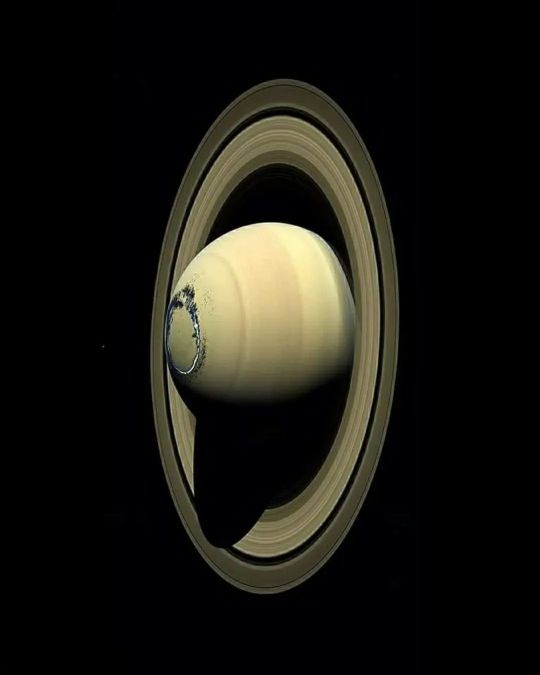


“ The aurora on Saturn “:
like on Earth and Jupiter, are generated by the interaction between the strong and rotating magnetic field of the planet and the solar wind, the stream of particles emitted by the Sun. 🪐
The aurora on Saturn, which are only visible in ultraviolet light, pulsate and change as the underlying process varies. They form in the polar regions, high above the planet’s atmosphere where the magnetic field lines twist and the interplanetary plasma is caught in them.
Cassini flew through these clouds of plasma and the first analysis of this shows that aurora on Saturn are caused by heavier particles than on Earth. In that respect, the planet’s aurora are similar to Jupiter’s ones. That said, the team stresses that the underlying mechanism is the same among the three planets. Despite this, there are still many mysteries left to uncover. “Surprisingly many questions revolving around Saturn's auroras remain unanswered, even after the outstanding success of the Cassini mission,” lead author Alexander Bader, a graduate researcher at Lancaster University said in a statement. "This last set of close-up images gives us unique highly detailed views of the small-scale structures which couldn't be discerned in previous observations by Cassini or the Hubble Space Telescope. We have some ideas about what their origin could be, but there is still a lot of analysis to be done.
// Everything About Earth
#space#planets#earth#moon#mercury#Mars#Venus#jupiter#Saturn#Neptune#SolarSystem#galaxy#Galaxies#MilkyWay#universe#explore#follow#discover
607 notes
·
View notes
Text
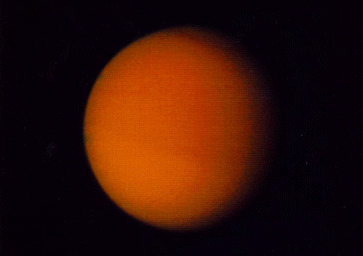
Titan: Saturn's Smog Moon - September 23rd, 1995.
"The largest moon of Saturn is a rare wonder. Titan is the only one of Saturn's moons with an atmosphere, and one of only two moons in the Solar System with this distinction (Neptune's Triton is the other). Titan's thick cloudy atmosphere is mostly nitrogen, like Earth's, but contains much higher percentages of "smog-like" chemicals such as methane and ethane. The smog may be so thick that it actually rains "gasoline-like" liquids. The organic nature of some of the chemicals found in Titan's atmosphere cause some to speculate that Titan may harbor life! Because of its thick cloud cover, however, Titan's actual surface properties remain mysterious. Voyager 1 flew by in 1980, taking the above picture, and much has been learned from Hubble Space Telescope observations. The Cassini mission scheduled for launch in 1997 will map Titan's surface, helping to solve some of its mysteries."
225 notes
·
View notes
Text
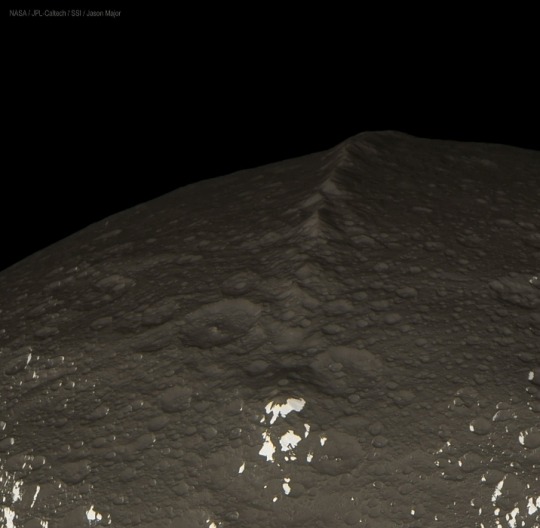

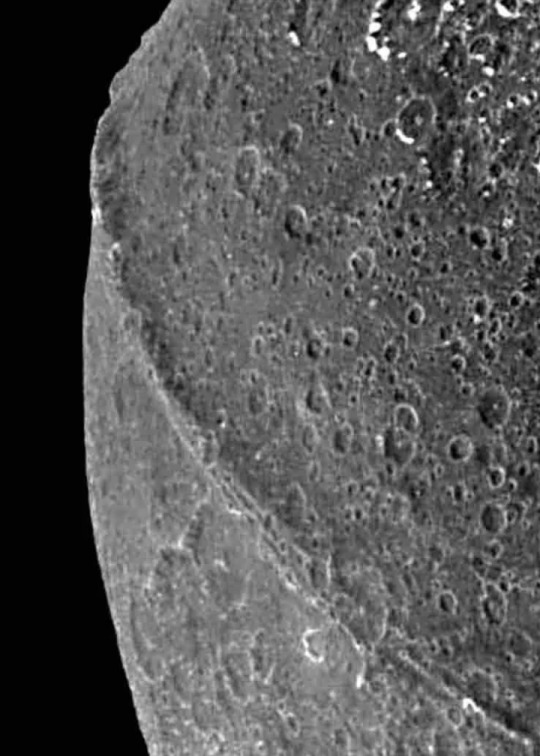

Clearest images ever taken of Equatorial Ridge on Saturn's moon Iapetus.
—
The equatorial ridge is the tallest mountain feature on Saturn's moon Iapetus.
It is 20 km (12 mi) high and is the third tallest mountain structure in the Solar System.
It runs along most of Iapetus' equator. It was discovered by the Cassini probe on 31 December 2004.
Cassini–Huygens, commonly called Cassini, was a space-research mission by NASA, the European Space Agency (ESA), and the Italian Space Agency (ASI) to send a space probe to study the planet Saturn and its system, including its rings and natural satellites.
#Saturn#Equatorial Ridge#Iapetus#moon#planet#astronomy#Cassini#Solar System#Cassini–Huygens#space probe#NASA#European Space Agency (ESA)#Italian Space Agency (ASI)
96 notes
·
View notes
Text

Interplanetary Earth
In an interplanetary first, on July 19, 2013 Earth was photographed on the same day from two other worlds of the Solar System, innermost planet Mercury and ringed gas giant Saturn. Pictured on the left, Earth is the pale blue dot just below the rings of Saturn, as captured by the robotic Cassini spacecraft then orbiting the outermost gas giant. On that same day people across planet Earth snapped many of their own pictures of Saturn. On the right, the Earth-Moon system is seen against the dark background of space as captured by the robotic MESSENGER spacecraft, then in Mercury orbit. MESSENGER took its image as part of a search for small natural satellites of Mercury, moons that would be expected to be quite dim. In the MESSENGER image, the Earth (left) and Moon (right) are overexposed and shine brightly with reflected sunlight. Destined not to return to their home world, both Cassini and MESSENGER have since retired from their missions of Solar System exploration.
#interplanetary#beautiful earth#earth#planet saturn#planet mercury#astronomy photography#astronews#astrography#astronomers#astrophotography#astrophysics#astronomy#nasa#universe#nasa photos#outer space#nasawebb#hubble space telescope#planetary nebula#planetary science#science facts#space science#science#astro notes#astro community#astrology observations#astro observations#astroblr#astro boy#space travel
59 notes
·
View notes
Text
A study zooms in on data that NASA's Cassini gathered at Saturn's icy moon and finds evidence of a key ingredient for life and a supercharged source of energy to fuel it.
Scientists have known that the giant plume of ice grains and water vapor spewing from Saturn's moon Enceladus is rich with organic compounds, some of which are important for life as we know it. Now, scientists analyzing data from NASA's Cassini mission are taking the evidence for habitability a step further: They've found strong confirmation of hydrogen cyanide, a molecule that is key to the origin of life.
Continue Reading.
79 notes
·
View notes
Photo




November 13, 1971: Mariner 9 becomes the first spacecraft to enter orbit around another planet
Mariner 9 was the fifth Martian probe of NASA’s Mariner program, which began in 1962. It returned more than 7,000 television images of Mars, including the first up-close pictures of Olympus Mons, Valles Marineris, and the planet’s moons Deimos and Phobos. The unprecedented success of the entire Mariner program led to numerous other interplanetary missions, including Viking, Cassini-Huygens, New Horizons, and Voyager.
Read more about the Mariner program here!
126 notes
·
View notes
Text

[☀️SOLAR HOUSE | Chapter Two | Pg. 8]
Crossfaded Encounters
This furry webcomic / comic about the solar system updates every Tuesday!
Previous Page
Annotations on this page: [5], [6]
[5] Voyager 2 returned thousands of images of Uranus and its system. Two notable ones include an image from the front taken on January 14th, 1986, and one from the back, taken on January 25th of the same year.
Source: NASA
[6] Cassini-Huygens was an orbiter and probe mission sent to Saturn that studied the planet and its moons between 2004 and 2017. During its final mission phase, The Grand Finale, the spacecraft orbited between Saturn’s atmosphere and its rings before plunging into the planet.
Source: NASA
#personification#gijinka#astronomy#space#furry#furry art#sfw furry#digitalart#oc#originalcharacter#solarhouse#character design#mwf art#mwf#milky way fandom#planet#comic#uranus#saturn#avian#springbok#antelope
64 notes
·
View notes
Photo

2023 March 31
Seeing Titan
Image Credit: VIMS Team, U. Arizona, U. Nantes, ESA, NASA
Explanation: Shrouded in a thick atmosphere, Saturn's largest moon Titan really is hard to see. Small particles suspended in the upper atmosphere cause an almost impenetrable haze, strongly scattering light at visible wavelengths and hiding Titan's surface features from prying eyes. But Titan's surface is better imaged at infrared wavelengths where scattering is weaker and atmospheric absorption is reduced. Arrayed around this visible light image (center) of Titan are some of the clearest global infrared views of the tantalizing moon so far. In false color, the six panels present a consistent processing of 13 years of infrared image data from the Visual and Infrared Mapping Spectrometer (VIMS) on board the Cassini spacecraft orbiting Saturn from 2004 to 2017. They offer a stunning comparison with Cassini's visible light view. NASA's revolutionary rotorcraft mission to Titan is due to launch in 2027.
∞ Source: apod.nasa.gov/apod/ap230331.html
148 notes
·
View notes
Link
Space Nuts Episode: Boeing Starliner, Titan's Coastal Erosion, and Dark Matter InfluenceSpace Nuts Episode: Boeing Starliner, Titan's Coastal Erosion, and Dark Matter Influence. Join Andrew Dunkley and Professor Fred Watson in this riveting episode of Space Nuts, where they delve into the latest space science and astronomy news.
Episode Highlights:- Boeing Starliner Update: The Boeing Starliner faces new challenges, this time with its return to Earth. Fred and Andrew discuss the issues with the thrusters and the cautious approach by NASA and Boeing to ensure the astronauts' safe return.
- Titan's Coastal Erosion: Discover the latest findings on Titan, the only other body in our solar system with a liquid surface. The duo explores how coastal erosion on Titan might be driven by waves, similar to Earth, and what this means for our understanding of this intriguing moon.
- Moon Formation: Fred explains the latest research on where moons are most likely to form, with a focus on rocky planets. Learn about the theories behind moon formation and why our own moon might be a rarity.
- Dark Matter Influence: Dark matter is back in the news with new research questioning our understanding of its influence on galaxies. Fred discusses the latest findings and what they mean for the future of dark matter research.
Don't forget to send us your questions via our website for our Q&A episodes....available Mondays... spacenuts.io.
Support Space Nuts and join us on this interstellar journey by visiting our website support page. Your contributions help us continue our mission to explore the wonders of the universe.
Clear skies and boundless exploration await on Space Nuts, where we make the cosmos your backyard.
Check out our sponsor: www.nordvpn.com/spacenuts
Become a supporter of this podcast: https://www.spreaker.com/podcast/space-nuts--2631155/support
Visit our websites: www.spacenuts.io
www.bitesz.com
#boeing#cassini#coastal#crew#dark#dragon#erosion#formation#influences#liquid#matter#mission#moon#nasa#on#spacex#starliner#surface#titan#titan's
0 notes
